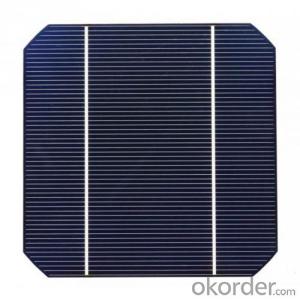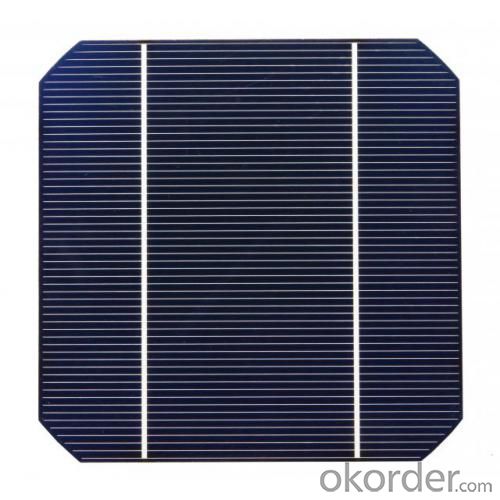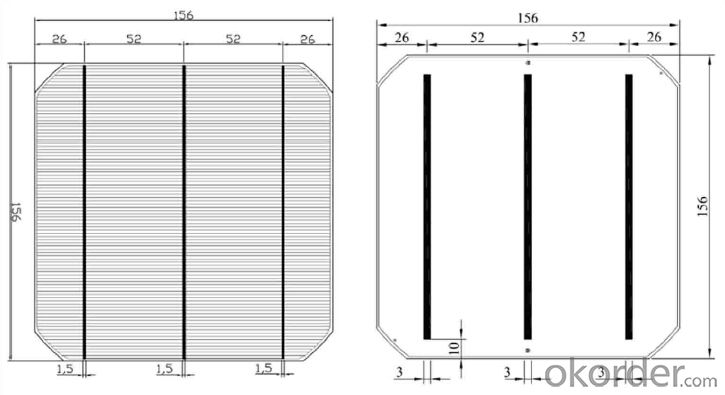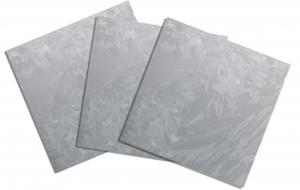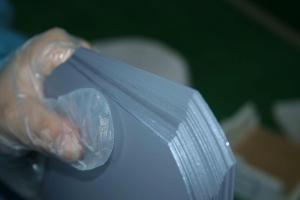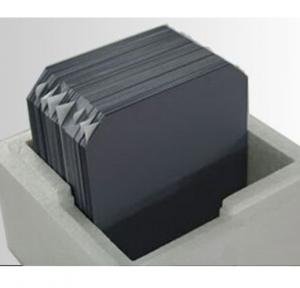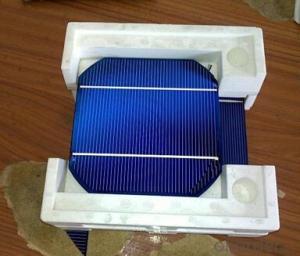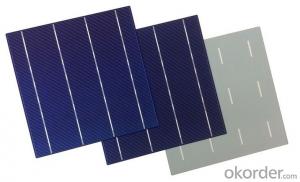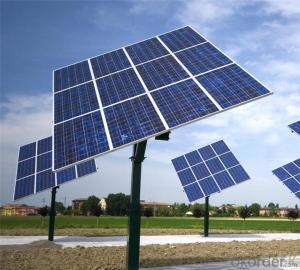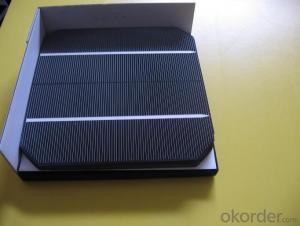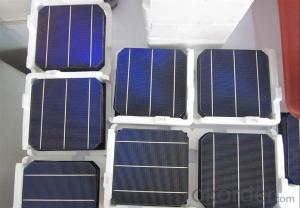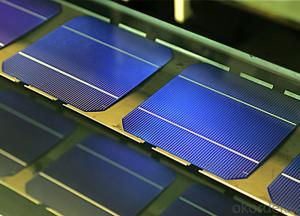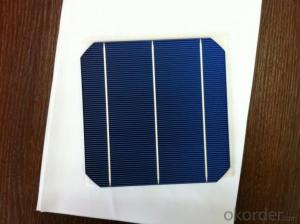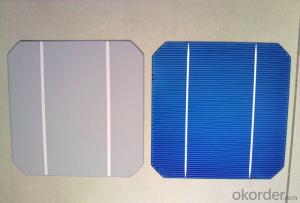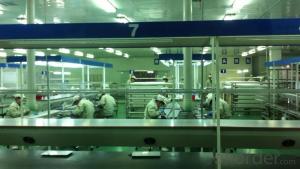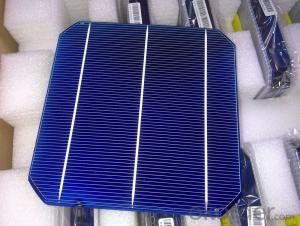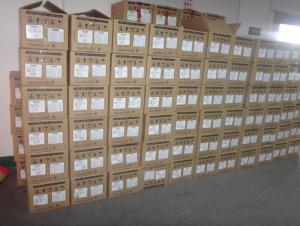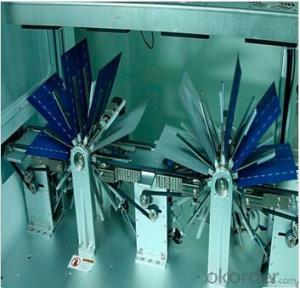Mono Solar Cells156mm*156mm in Bulk Quantity Low Price Stock 19.6
- Loading Port:
- Shanghai
- Payment Terms:
- TT OR LC
- Min Order Qty:
- 1000 pc
- Supply Capability:
- 100000 pc/month
OKorder Service Pledge
OKorder Financial Service
You Might Also Like
Brief Introduction
- Up to 20.0% efficiency, one of the highest performing mono crystalline cells on the market
- Three bus bars boosts current collection over the entire cell area, leading to higher fill factors
- Blue anti-reflecting coating allows more sunlight be captured and converted to electricity
- Finer, closer fingers improves charge collections for improved energy yield
- Lower light-induced degradation leads to greater power output over the entire module lifetime
- All solar cells are tightly classified to optimize output of module
- Maximum yield and longevity due to hotspot prevention
- Premium appearance results in a highly uniform and aesthetically appealing module
Specification
- Product Mono-crystalline silicon solar cell
- Dimension 156 mm x 156 mm ± 0.5 mm
- Thickness 200 μm ± 30 μm
- Front 1.5 ± 0.1 mm busbar (silver)
- Silicon nitride antireflection coating
- Back 3.0 mm continuous soldering pads (silver)
- Back surface field (aluminum)
Electric performance parameters

- Testing conditions: 1000 W/m2, AM 1.5, 25 °C, Tolerance: Efficiency ± 0.2% abs., Pmpp ±1.5% rel.
- Imin : at 0.5 V
Light Intensity Dependence
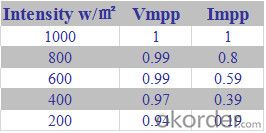
Soldering Ability
- Peel Strength: > 1.0 N/mm (Pull soldered ribbon from busbar in 5 mm/s of 180°)
Dimension Figure
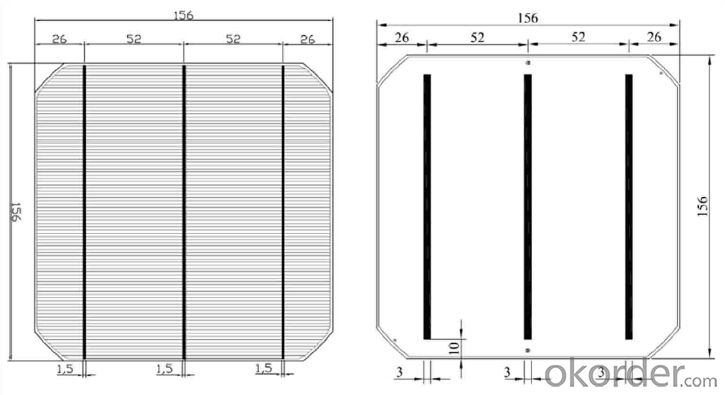
Quick Response
- Any time and anywhere, reply clients' email and solve all problems happen in the work at the first time.
- Remove clients doubts and offer the best solution at the first time.
- Give our clients the lastest news of the photovoltaic, update the newest stock informtion.
Production and Quality Control
- Precision cell efficiency sorting procedures
- Stringent criteria for color uniformity and appearance
- Reverse current and shunt resistance screening
- ISO9001,ISO14001 and OHSAS 18001,TUV Certificated
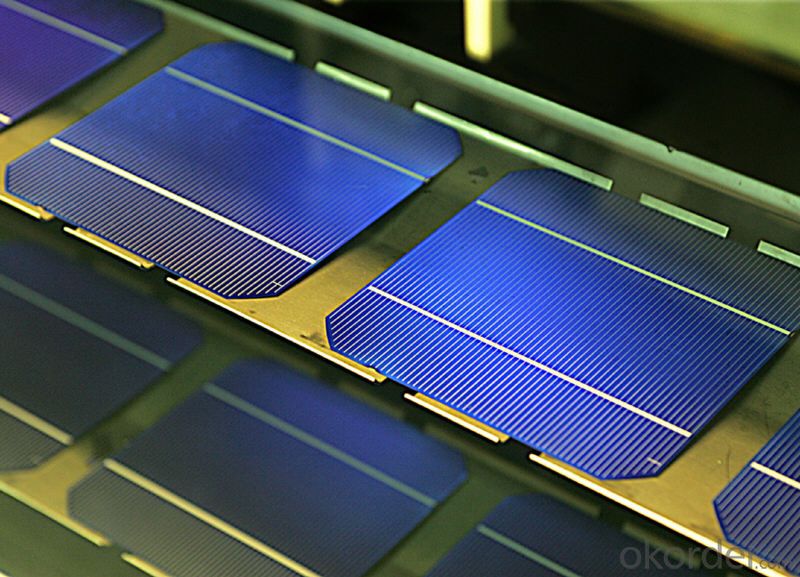
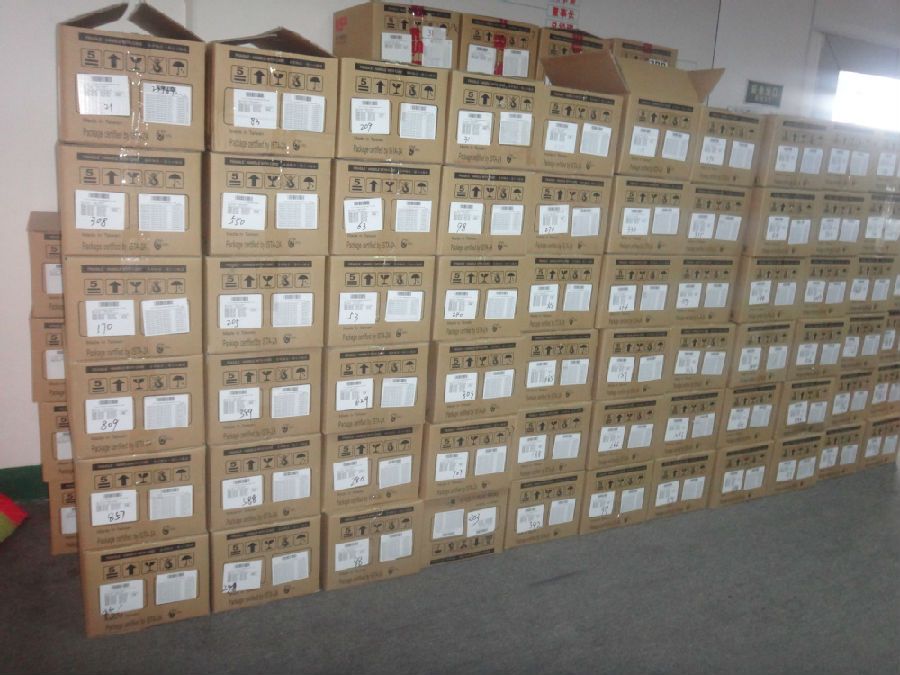
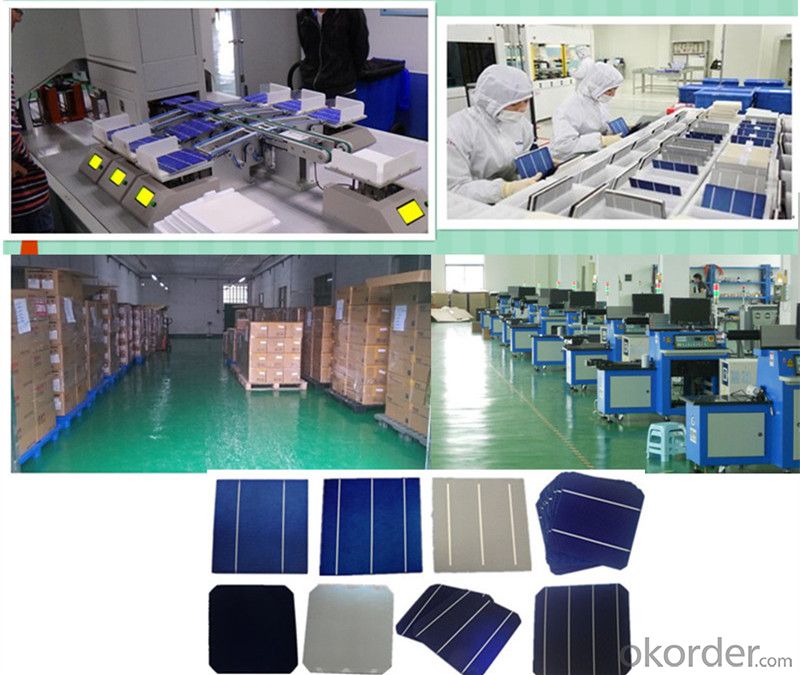
FAQ:
1. Q: Do you have your own factory?
A: Yes, we have. Our factory located in Jiangsu
2. Q: How can I visit your factory?
A: Before you visit,please contact us.We will show you the route or arrange a car to pick you up.
3. Q: Do you provide free sample?
A: Commenly we provide paid sample.
4. Q: Could you print our company LOGO on the nameplate and package?
A: Yes, we accept it.And need an Authorization Letter from you.
5. Q: Do you accept custom design on size?
A: Yes, if the size is reasonable.
6. Q: How can I be your agent in my country?
A: Please leave feedback. It's better for us to talk about details by email.
7. Q: Do you have solar project engineer who can guide me to install system?
A: Yes, we have a professional engineer team. They can teach you how to install a solar system.
- Q: How do solar silicon wafers perform in coastal salty air environments?
- Solar silicon wafers generally perform well in coastal salty air environments due to their high corrosion resistance. However, continuous exposure to salt-laden air may slightly reduce their efficiency over time. Regular maintenance and cleaning can help mitigate any potential performance degradation.
- Q: How is a backsheet attached to a solar silicon wafer?
- A backsheet is typically attached to a solar silicon wafer through a lamination process. The backsheet, which is a protective layer made of materials like polymer or glass, is placed on top of the silicon wafer. Heat and pressure are then applied to bond the layers together, creating a secure attachment that protects the wafer from environmental factors.
- Q: How do solar silicon wafers contribute to the overall cost of a solar panel?
- Solar silicon wafers are a significant contributor to the overall cost of a solar panel. They account for a substantial portion of the manufacturing expenses due to the high cost of raw materials and the complex fabrication process involved. The efficiency and quality of these wafers directly impact the efficiency and durability of the solar panel, making them an essential component. Therefore, the cost of solar silicon wafers plays a crucial role in determining the final price of a solar panel.
- Q: Can solar silicon wafers be reused or repurposed after their lifespan in a solar panel?
- Yes, solar silicon wafers can be reused or repurposed after their lifespan in a solar panel. While they may no longer be suitable for producing electricity in solar panels, they can be recycled to extract valuable materials such as silicon, silver, and aluminum. These materials can then be used in the production of new solar cells or other electronic devices, reducing the need for raw materials and minimizing waste. Additionally, the wafers can be repurposed for various applications such as in the manufacturing of semiconductors, integrated circuits, or other electronic components.
- Q: What is a silicon wafer
- Si seed a specific crystal orientation (seeds, usually a small ingot) rod inserted into the molten state under Si, and slowly pull up the crystal and a seed crystal and the same column to be produced by controlling the process variables to pull the speed to control the crystal column the diameter can be cut into a crystal column. The small lot, wafer was produced. Crystal column ends can not be cut into available wafer parts can be called the head tail. Preliminary cutting out the wafer, usually can not be used as a rough surface, wafer production, and usually in the subsequent process of polishing, polishing the noun to which. According to the different requirements of wafer fabrication, usually need to rough within wafer doping some impurities, such as P, B etc.
- Q: Is solar silicon wafer often harmful to the body?
- . The main materials used in solar cells, such as single crystal silicon wafers, metal products, silver electrodes, etc., are harmless to the human body. Immature production process may lead to harmful gases such as dust, light and heat electromagnetic radiation, noise, etc..
- Q: Can solar silicon wafers be used in agricultural crop drying systems?
- Yes, solar silicon wafers can be used in agricultural crop drying systems. These wafers can be utilized to generate solar energy, which can power systems for drying crops in an environmentally friendly and cost-effective manner.
- Q: What is the role of texturing in solar silicon wafers?
- The role of texturing in solar silicon wafers is to enhance light absorption and increase the efficiency of the solar cells. Texturing creates a rough or textured surface on the wafer, which helps to trap more light within the material, reducing reflection and improving light absorption. This increases the chances of photons interacting with the silicon and generating electricity. Texturing also helps to reduce the amount of surface area covered by the anti-reflective coating, allowing more light to penetrate the wafer and be converted into usable energy. Overall, texturing plays a crucial role in maximizing the performance and efficiency of solar silicon wafers.
- Q: Can solar silicon wafers be used in water desalination systems?
- Yes, solar silicon wafers can be used in water desalination systems. Solar silicon wafers can be integrated into solar panels to generate electricity, which can then be used to power water desalination systems. These systems utilize the energy from the solar panels to remove salt and impurities from seawater or brackish water, making it suitable for human consumption or agricultural use.
- Q: How is a solar silicon wafer connected to other components in a solar panel?
- A solar silicon wafer is typically connected to other components in a solar panel through a process called interconnection. This involves soldering or bonding thin metal strips, known as busbars, onto the surface of the wafer. These busbars help in the efficient transfer of electricity generated by the wafer to other parts of the solar panel, such as the junction box or other solar cells. The interconnection process ensures a reliable electrical connection and enables the solar panel to function as a cohesive unit.
Send your message to us
Mono Solar Cells156mm*156mm in Bulk Quantity Low Price Stock 19.6
- Loading Port:
- Shanghai
- Payment Terms:
- TT OR LC
- Min Order Qty:
- 1000 pc
- Supply Capability:
- 100000 pc/month
OKorder Service Pledge
OKorder Financial Service
Similar products
Hot products
Hot Searches
Related keywords
